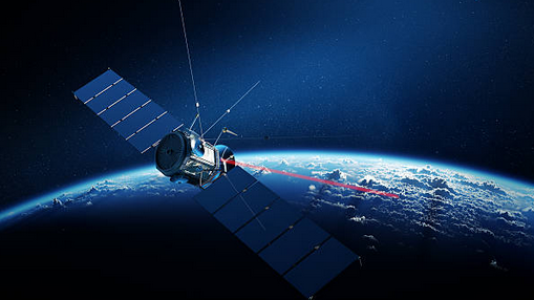Short-wave infrared high power laser for long-distance satellite communication based on a compact laser system using Ho:YAG thin disk emitting in the 2.1 um wavelength region

The project of SWIR high-power thin-disk-based laser focuses on the development of the TRL 4 laser prototype for purposes of free-space laser communication. Laser communication is currently based on free space laser communication with conventional wavelengths at 1064 and 1550 nm in the infrared spectrum and still also on wavelengths in the visible spectrum. Our proposed SWIR laser prototype emits in the 2100 nm wavelength region, which introduces advanced properties of such a laser system, leading to user benefits of the laser system. The SWIR thin-disk laser project has 2 main phases: The proof of concept and the Demonstration phase. The goal of the first phase of the project was to design, construct, and demonstrate the innovative 2.1 μm laser source, the laser transmitter, in the laboratory. The system of laser receiver and laser detection were also designed and prepared. The goal of the second phase was to run the laser prototype outside the laser-dedicated laboratory and analyze beam propagation in the real environment. The high-power thin-disk laser prototype has been developed and constructed, and the performance of the laser was successfully tested in the HiLASE laboratory with the main output parameters: 6W CW laser beam, 2095 nm central wavelength, a diffraction-limited beam (M2 < 1.1) in a fundamental transverse mode with near Gaussian beam quality. Beam propagation in air across short-range and mid-range distances has been simulated and analyzed. Laser beam propagation has been analyzed for 520, 640, 1064, and 1550 nm wavelengths by direct measurement. Detailed results are presented. The measured results correspond with theoretical expectations of the lower beam attenuation in the 2100 nm wavelength range in the atmosphere and the user benefits of the new proposed wavelength for free-space laser communication. The objectives of the project have been met.
